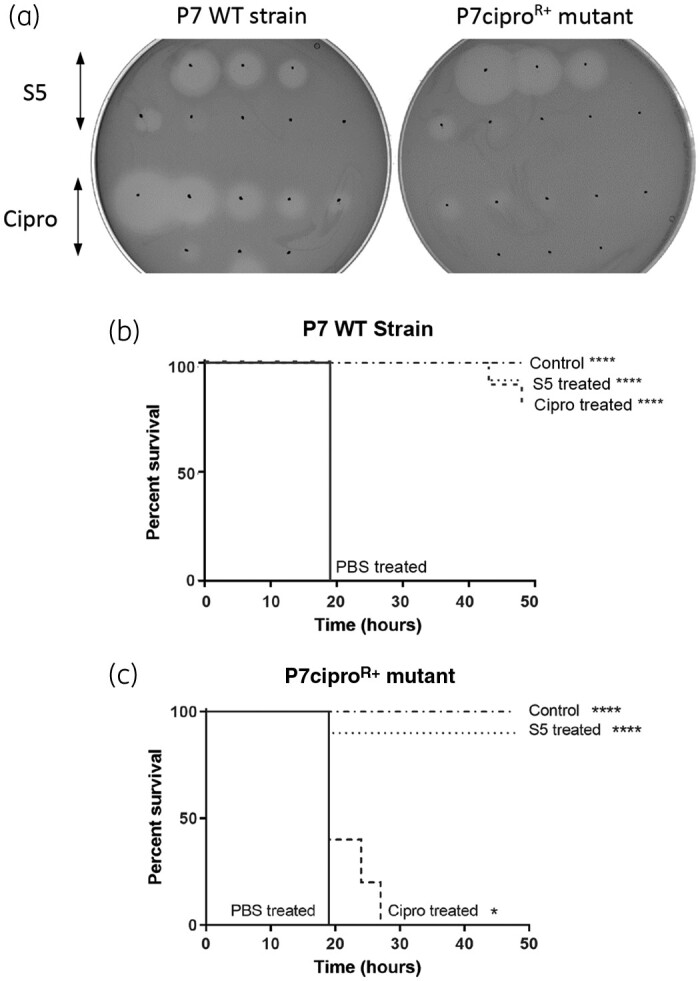Figure 3.

Purified pyocin S5 is active against ciprofloxacin-resistant P. aeruginosa in vitro and in vivo. (a) Spot tests to determine the activity of ciprofloxacin and pyocin S5 against P. aeruginosa strain P7 and a P7-derived ciprofloxacin-resistant mutant. Three microlitres of a range of concentrations of ciprofloxacin (3 μg to 23 ng of ciprofloxacin, 2× dilutions) and pyocin S5 (3 μg to 0.3 pg of pyocin S5, 10× dilutions) was spotted on a growing lawn of P. aeruginosa. The presence of clear zones indicates pyocin or antibiotic activity. (b and c) Kaplan–Meier survival curves of larvae infected with the WT P. aeruginosa P7 strain (b) or the P7-derived ciprofloxacin-resistant mutant (P7ciproR+) (c) (n = 10 per group) treated 3 h post-infection with ciprofloxacin (10 μg) or pyocin S5 (5 μg). Control uninfected larvae (n = 10 per group) were injected with PBS. Groups of uninfected larvae (n = 10 per group) were also injected with ciprofloxacin (10 μg) or pyocin S5 (5 μg) and all survived, but are not represented here. Survival curves are representative of two distinct experiments. Asterisks indicate significant differences relative to larvae treated with PBS, as assessed by the log-rank (Mantel–Cox) test (*P < 0.05; ****P < 0.0001).
